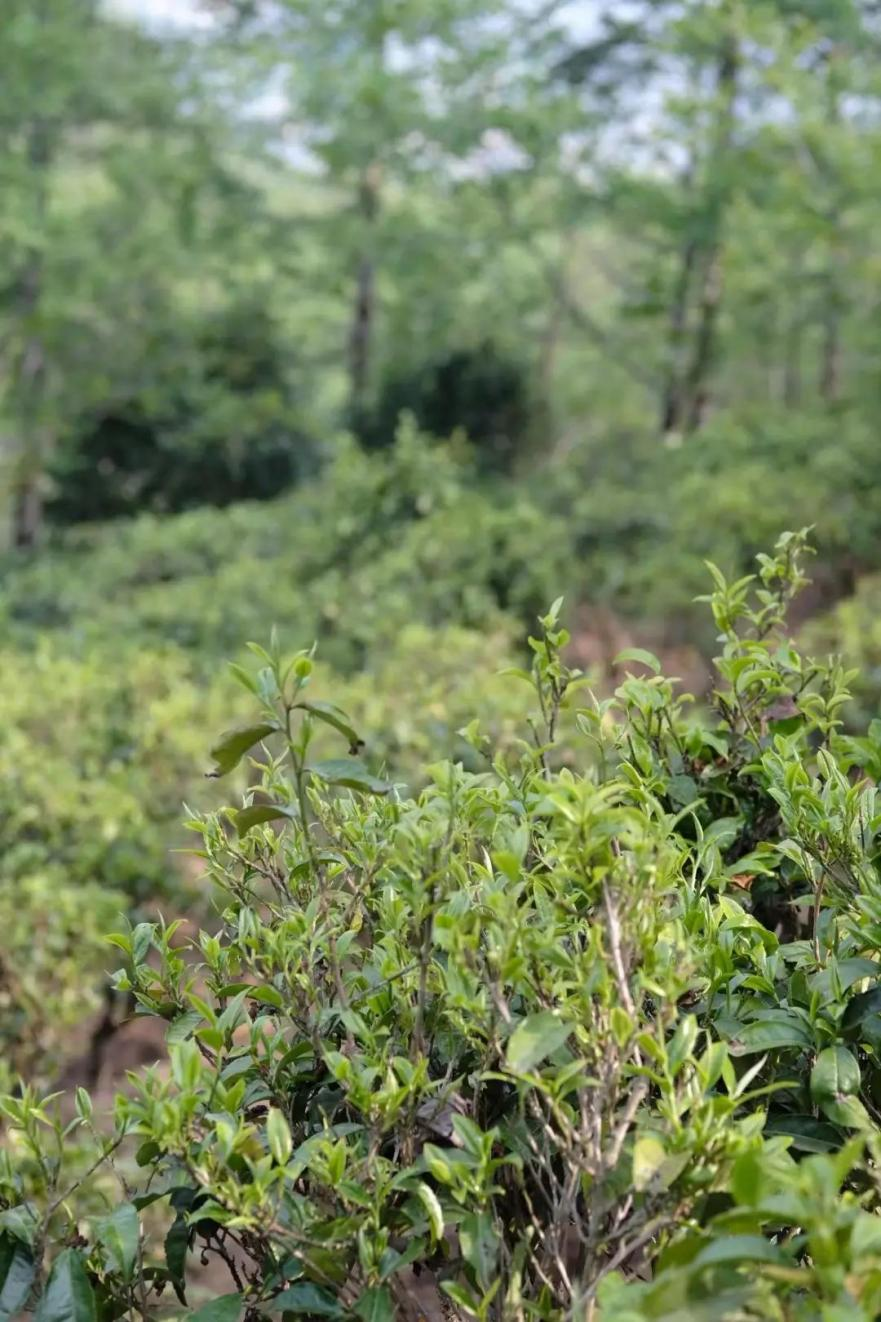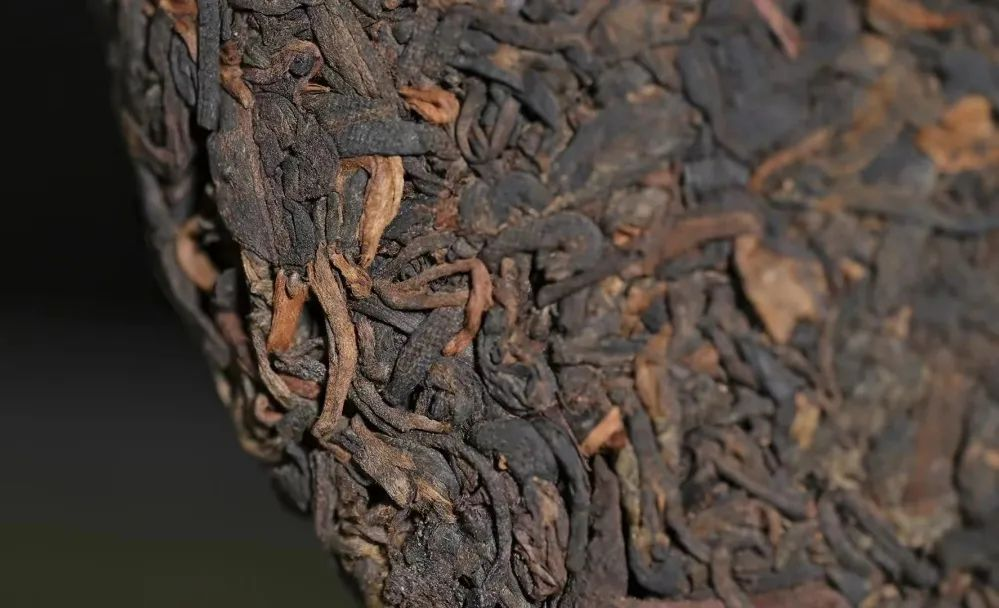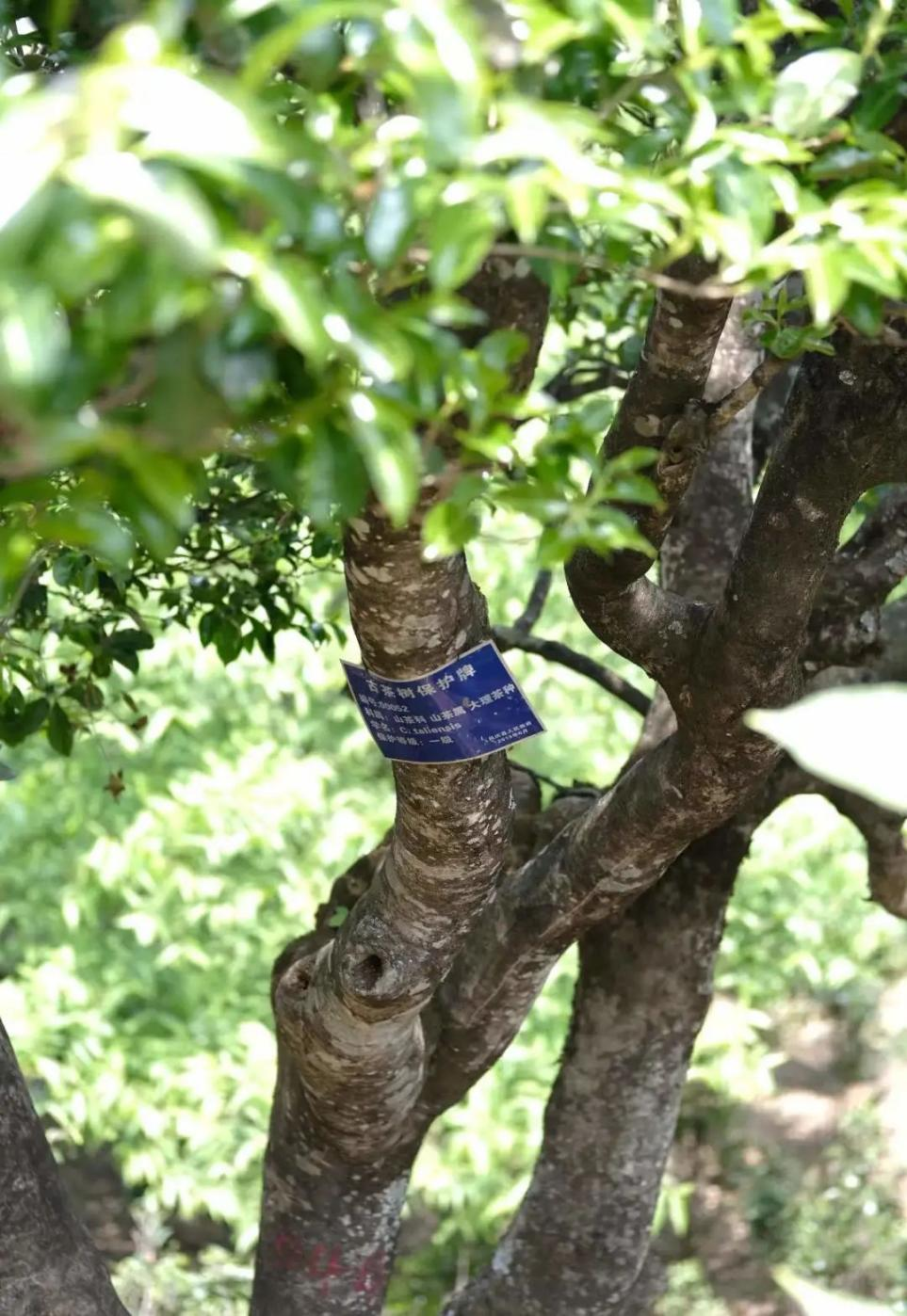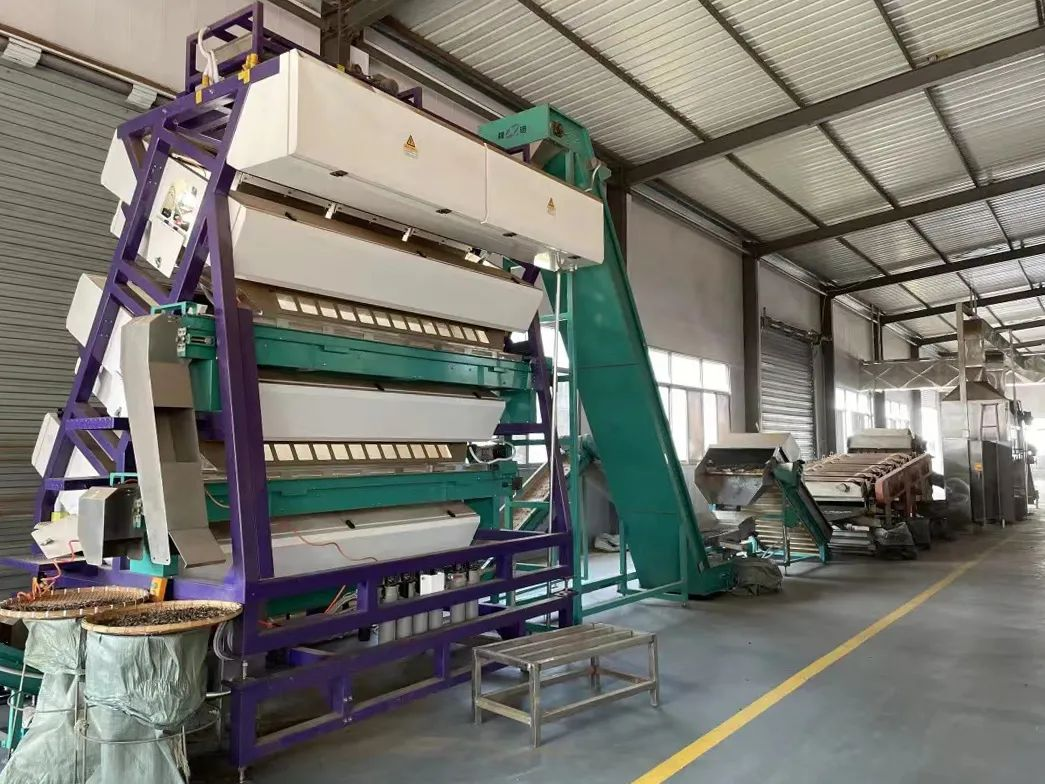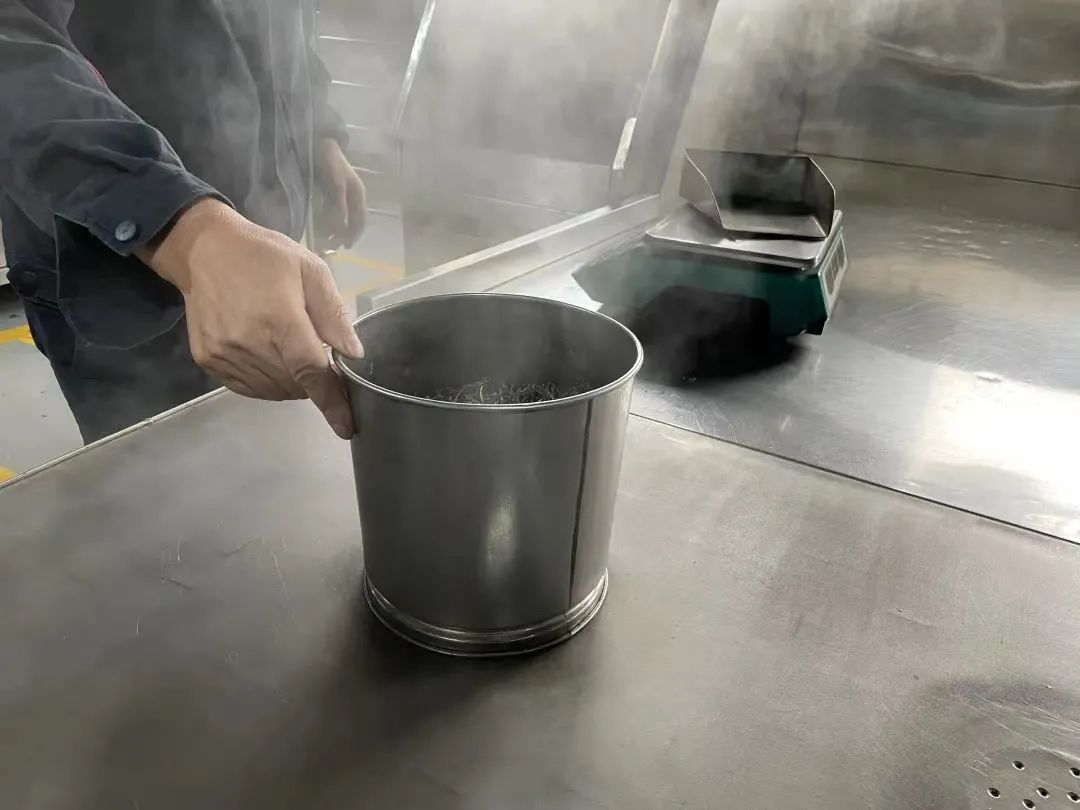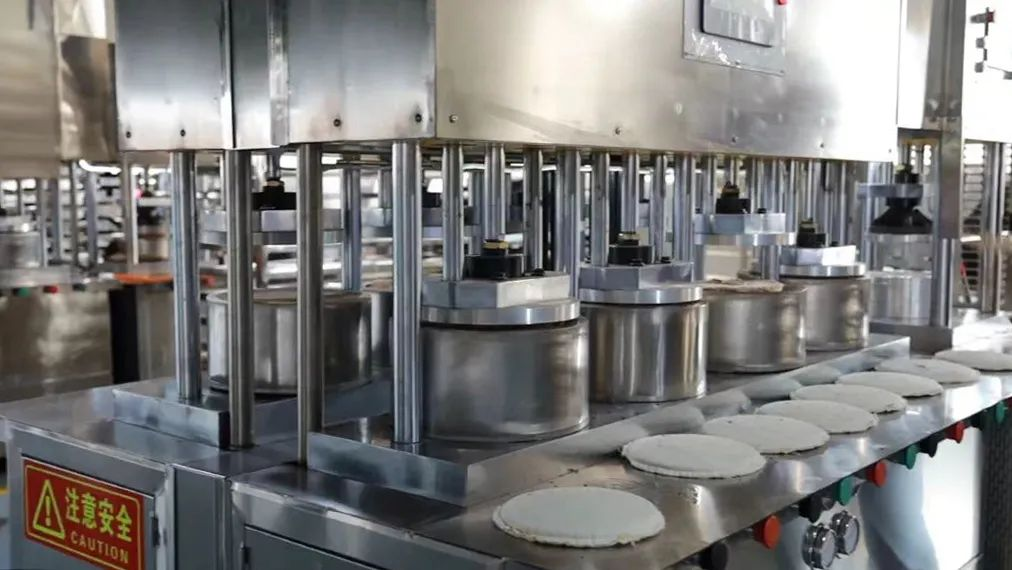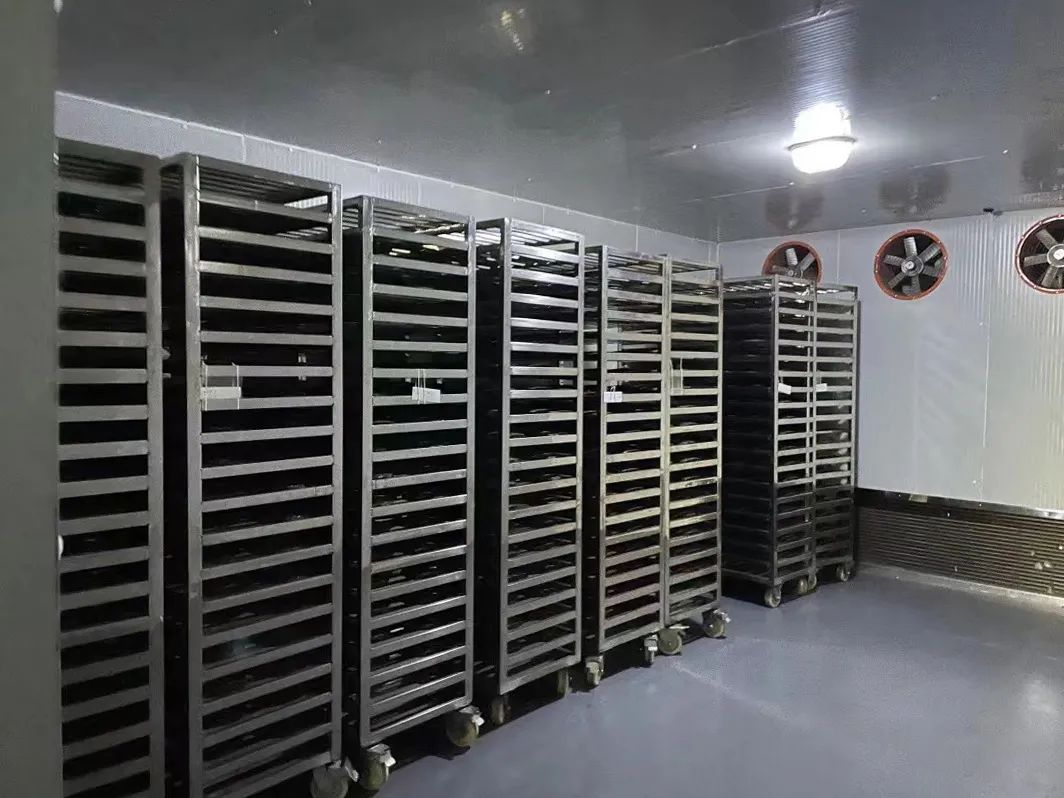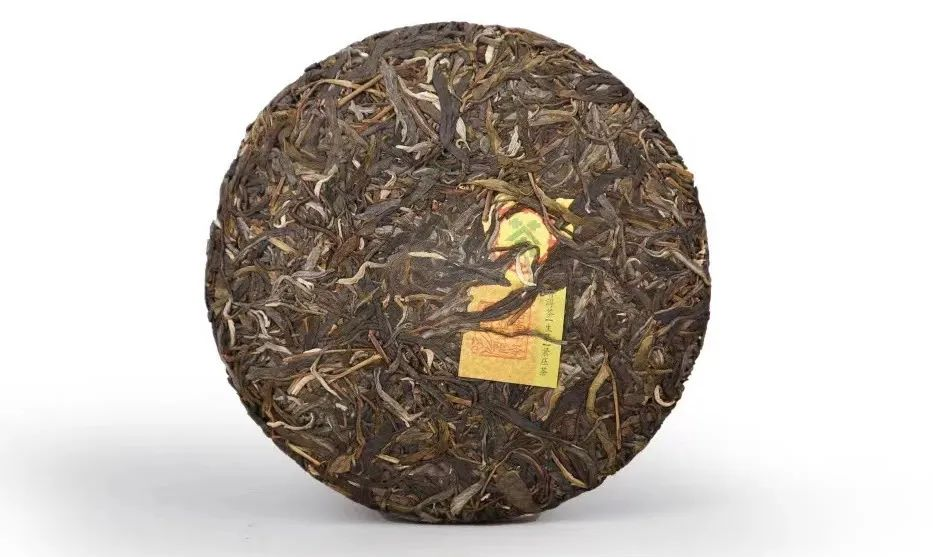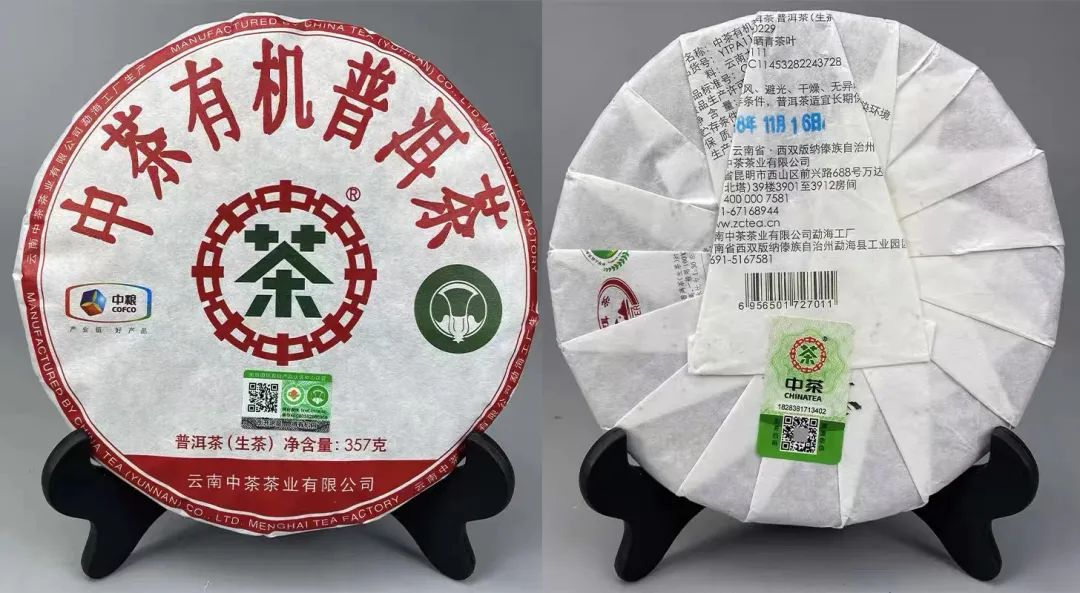Organic tea follows natural laws and ecological principles in the production process, adopts sustainable agricultural technologies that are beneficial to ecology and the environment, does not use synthetic pesticides, fertilizers, growth regulators and other substances, and does not use synthetic chemicals in the processing process. of food additives for tea and related products.
Most of the raw materials used in the processing of Pu-erh tea are grown in mountainous areas with good ecological environment and far away from cities. These mountainous areas have less pollution, suitable climatic conditions, large temperature difference between day and night, more soil humus, high organic matter content, sufficient nutrients, good resistance of tea trees, and high quality of tea. Excellent, laying a good foundation for the production of organic Pu-erh tea.
The development and production of organic Pu-erh products is not only an effective measure for enterprises to improve the quality and market competitiveness of Pu-erh tea, but also an important production method to protect Yunnan’s ecological environment and save natural resources, with broad development prospects.
The article summarizes the processing technology and related requirements of organic Pu-erh tea, and provides a reference for exploring and formulating technical regulations for organic Pu-erh tea processing, and also provides technical reference for the processing and production of organic Pu-erh tea.
01 Requirements for Organic Pu’er Tea Producers
1. Requirements for Organic Pu-erh Tea Producers
Qualification requirements
Organic Pu-erh tea products must be produced in accordance with the technical requirements in the national standard for organic products GB/T 19630-2019. The processed products have been certified by relevant certification bodies, with a complete product traceability system and sound production records.
The organic product certification is issued by the certification body in accordance with the provisions of the “Organic Product Certification Management Measures” and is valid for one year. It can be divided into two categories: organic product certification and organic conversion certification. Combined with the actual production and processing of organic tea products, the organic product certification certificate records in detail the organic tea garden information, fresh leaf yield, organic tea product name, processing address, production quantity and other information.
At present, there are two types of enterprises with organic Pu-erh tea processing qualifications. One is the tea garden that does not have organic certification, but has only obtained the organic certification of the processing plant or processing workshop; the other is the enterprise that has obtained both the organic tea garden certification and the Organic certification of a processing plant or workshop. These two types of enterprises can process organic Pu-erh tea products, but when the first type of enterprises process organic Pu-erh tea products, the raw materials used must come from organic certified tea gardens.
Production conditions and management requirements
The organic Pu-erh tea production plant should not be located in a polluted area. There should be no hazardous waste, harmful dust, harmful gas, radioactive substances and other diffuse pollution sources around the site. Insects, no harmful bacteria such as mold and Escherichia coli are allowed.
The fermentation of organic Pu-erh tea requires a special workshop, and the direction of the flow of people and products should be fully considered when setting the fermentation site to avoid secondary pollution and cross-contamination in the production and processing process. The storage place needs to be clean, moderately ventilated, protected from light, without peculiar smell, and equipped with moisture-proof, dust-proof, insect-proof and rat-proof facilities.
The production of organic Pu-erh tea requires special fresh leaf containers and transportation tools, special production workshops or production lines, and processing equipment that uses clean energy. Before production, it is necessary to strictly pay attention to the cleaning of processing equipment and processing places, and try to avoid parallel processing with other teas during the production process. . Both clean water and production water must meet the requirements of the “Drinking Water Sanitation Standards”.
During production, the health and personal hygiene of processing personnel must also be strictly paid attention to. Processing personnel must apply for a health certificate and pay attention to personal hygiene. Before entering the workplace, they must wash their hands, change clothes, change shoes, wear a hat, and wear a mask before going to work.
From the picking of fresh leaves, the processing process of organic Pu-erh tea should be recorded by full-time technical personnel. The picking time of fresh leaves, the planting bases of fresh leaves, the batch and quantity of fresh leaves harvested, the processing time of each process of the product, the technical parameters of processing, and the records of incoming and outgoing storage of all raw materials should be tracked and checked throughout the whole process and recorded. Organic Pu-erh tea production must establish a sound product production record file in order to achieve a sound and sound traceability record, allowing consumers and regulatory authorities to implement product quality tracking.
02 Processing Requirements of Organic Pu-er Tea
1. Requirements for fresh tea leaves
The fresh leaves of organic Pu-erh tea must be picked from tea gardens with excellent ecological conditions, unpolluted, fresh air and clean water sources, which have obtained organic certification and are within the validity period of the certification. Because organic tea products are generally high-end, only four grades are set for fresh leaf grades, and coarse and old fresh leaves are not picked. The grades and requirements of fresh leaves are shown in Table 1. After picking, fresh leaf containers must be clean, ventilated, and non-polluting. Clean and well-ventilated bamboo baskets should be used. Soft materials such as plastic bags and cloth bags should not be used. During the transportation of fresh leaves, they should be lightly placed and lightly pressed to minimize mechanical damage.
Table1.grading indicators of fresh leaves of organic Pu-erh tea
|
Grand |
Ratio of buds and leaves |
|
Special grand |
One bud and one leaf account for more than 70%, and one bud and two leaves account for less than 30% |
|
Grand 1 |
One bud and two leaves account for more than 70%, and other buds and leaves account for less than 30% of the same tenderness. |
|
Grand 2 |
One bud, two and three leaves account for more than 60%, and other bud leaves of the same tenderness account for less than 40%. |
|
Grand 3 |
One bud, two and three leaves account for more than 50%, and other bud leaves account for less than 50% of the same tenderness. |
2. Uirements for the initial production of sun-dried green tea
After the fresh leaves enter the factory for acceptance, they need to be spread out and dried, and the drying place should be clean and hygienic. When spreading, use bamboo strips and place them on racks to maintain air circulation; the thickness of fresh leaves is 12-15 cm, and the spreading time is 4-5 hours. After the drying is completed, it is processed according to the process of fixing, rolling and sun drying.
The organic Pu-erh tea greening equipment needs to use clean energy, and it is advisable to use electric energy greening machines, natural gas greening machines, etc., and traditional firewood, charcoal fire, etc. shall not be used, so as to avoid the adsorption of odors during the greening process.
The temperature of the fixing pot should be controlled at about 200 ℃, the fixing time of the drum should be 10-12 min, and the time of manual fixing should be 7-8 min. After finishing, it needs to be kneaded while it is hot, the speed of the kneading machine is 40~50 r/min, and the time is 20~25 min.
Organic Pu-erh tea must be dried by sun-drying process; it should be carried out in a clean and dry drying shed without peculiar smell; the sun-drying time is 4-6 hours, and the drying time should be reasonably controlled according to the weather conditions, and the moisture content of the tea should be controlled within 10%; no drying is allowed. Dry fried dry, can not be dried in the open air.
3.Fermentation requirements for cooked tea
The fermentation of organic Pu-erh ripe tea adopts off-the-ground fermentation. The tea leaves do not directly contact the ground. The method of erecting wooden boards can be used. The wooden boards are laid at a height of 20-30 cm from the ground. There is no peculiar smell, and wide wooden boards should be used, which is more conducive to water retention and heat preservation during the fermentation process.
The fermentation process is divided into tidal water, uniform heaping, heaping heaping, turning heaping, lifting and deblocking, and spreading to dry. Because organic Pu-erh tea is fermented off the ground, its fermentation bacteria, oxygen content, and temperature changes of tea piles are different from those of conventional Pu-her ripe tea. The following points should be paid attention to during the fermentation process.
①Adding water to dry green tea to increase humidity is the key process of Pu-erh tea stacking fermentation. The amount of water added during fermentation of organic Pu-erh tea needs to be reasonably controlled according to the ambient temperature, air humidity, fermentation season and the grade of the tea.
The amount of water added during fermentation is generally slightly lower than that of conventional Pu-er ripe tea. The amount of water added during fermentation of the super-tender and first-class organic sun-dried green tea is 20%~25% of the total weight of the tea, and the heap height should be low; 2 and 3 During fermentation, the amount of water added to the first-grade organic sun-dried green hair tea is 25%~30% of the total weight of the hair tea, and the stacking height can be slightly higher, but should not exceed 45 cm.
During the fermentation process, according to the humidity of the tea pile, moderate water is added during the turning process to ensure the full transformation of the contained substances in the fermentation process. The fermentation workshop should be ventilated and ventilated, and the relative humidity should be controlled at 65% to 85%.
②Turning the heap can adjust the temperature and water content of the tea heap, increase the oxygen content of the tea heap, and at the same time play the role of dissolving the tea blocks.
Organic Pu-er tea is sturdy and rich in content, and the fermentation time is long.The turning interval should be slightly longer. Considering factors such as fermentation off the ground, it is generally turned once every 11 days; the entire fermentation process needs to be turned 3 to 6 times. The temperature of the middle and lower layers should be balanced and consistent. If the temperature is lower than 40 ℃ or higher than 65 ℃, the pile should be turned over in time.
When the appearance and color of the tea leaves are reddish-brown, the tea soup is brownish-red, the old fragrance is strong, the taste is mellow and sweet, and there is no bitterness or strong astringency, it can be piled up for drying.
★When the water content of organic Pu-er tea is less than 13%, the fermentation of the cooked tea is completed, which lasts for 40~55 days.
1. Refinement requirements
There is no need for sieving in the refining process of organic Pu-erh raw tea, which will increase the crushing rate, resulting in incomplete tea strips, heavy legs and other quality defects. Through the refining equipment, the sundries, withered leaves, tea dust and other substances are removed, and finally manual sorting is carried out.
The refining process of organic Pu-erh tea needs to be screened. The screening method of the shaking screen machine and the flat circular screen machine is connected to each other, and the screen is arranged according to the thickness of the raw materials. The tea head and broken tea need to be removed during sieving, but there is no need to distinguish the number of channels and grading. , and then remove the sundries through the electrostatic cleaning machine, adjust the number of times of passing through the electrostatic cleaning machine according to the clarity of the tea, and can directly enter the manual sorting after the electrostatic cleaning.
1. Compression packaging technical requirements
The refined raw raw material of organic Pu-erh tea can be directly used for pressing. The refined organic Pu-erh cooked tea raw materials go through the fermentation process, the content of pectin in the tea leaves is reduced, and the bonding efficiency of the tea sticks is reduced. Activation of colloid is conducive to compression molding.
Organic Pu-er tea premium, first-grade tea raw materials,are higher grades, the amount of water added during the tide accounts for 6% to 8% of the total weight of the dry tea; for grade two and three teas, the amount of water added during the tide accounts for 10% to 12% of the total weight of the dry tea.
★The raw materials of organic Pu-er tea should be autoclaved within 6 hours after the tide, and should not be placed for a long time, so as not to breed harmful bacteria or produce bad smells such as sour and sour under the action of damp heat, so as to ensure the quality requirements of organic tea.
The pressing process of organic Pu-erh tea is carried out in order of weighing, hot steaming (steaming), shaping, pressing, spreading, demoulding, and low-temperature drying.
·In the weighing process, in order to ensure sufficient net content of the finished product, it is also necessary to consider the production consumption of the production process, and the weighing quantity should be adjusted appropriately according to the moisture content of the tea leaves.
·During hot steaming, since the raw materials of organic Pu-erh tea are relatively tender, the steaming time should not be too long, so that the tea leaves can be softened, generally steaming for 10~15 s.
· Before pressing, adjust the pressure of the machine, press while it is hot, and place it in a square to avoid uneven thickness of the finished product. When pressing, it can be decompressed for 3~5 s after setting, and it is not suitable for setting for too long.
· The tea semi-finished product can be demoulded after it has cooled down.
· Low temperature should be used for slow drying, and the drying temperature should be controlled at 45~55 °C. The drying process should be based on the principle of first low and then high. In the initial 12 hours of drying, slow drying should be used. The temperature should not be too fast or too fast. In the case of internal humidity, it is easy to breed harmful bacteria, and the whole drying process takes 60~72 hours.
The semi-finished organic tea after drying needs to be spread out and cooled for 6-8 hours, the moisture of each part is balanced, and it can be packaged after checking that the moisture reaches the standard. The packaging materials of organic Pu-erh tea should be safe and hygienic, and the inner packaging materials must meet the requirements of food-grade packaging. natural) food logo. If possible, biodegradation and recycling of packaging materials should be consider
1. Requirements of Storage and Shipping
After the processing is completed, it should be stored in the warehouse in time, stacked on the pallet, and separated from the ground, preferably 15-20 cm from the ground. According to experience, the best storage temperature is 24~27 ℃, and the humidity is 48%~65%. During the storage process of organic Pu-erh, it should be distinguished from other products and should not be affected by other substances. It is advisable to use a special warehouse, manage it by a special person, and record the data in and out of the warehouse in detail, as well as the temperature and humidity changes in the warehouse.
The means of transporting organic Pu-erh tea should be clean and dry before loading, and should not be mixed or contaminated with other teas during transportation; during transportation and loading and unloading, the organic tea certification mark and related instructions on the outer packaging must not be damaged.
1. The difference between the production process of organic Pu-erh tea and conventional Pu-erh tea.
Table 2 lists the differences in the key processes in the production process of organic Pu-erh tea and conventional Pu-erh tea. It can be seen that the production and processing processes of organic Pu-erh tea and conventional Pu-erh tea are quite different, and the processing of organic Pu-erh tea not only requires stricter technical regulations, At the same time, it is necessary to have a sound organic Pu-erh processing traceability system.
Table 2.The difference between the production process of organic Pu-erh tea and conventional Pu-erh tea.
|
Processing procedure |
Organic Pu-erh tea |
Conventional Pu-erh tea |
|
Picking fresh leaves |
Fresh leaves must be picked from organic tea gardens without pesticide residues. Pick one bud with more than three leaves, fresh leaves are divided into 4 grades, do not pick coarse old fresh leaves |
Yunnan big leaves can be planted with fresh leaves. Fresh leaves can be divided into 6 grades. Thick old leaves such as one bud and four leaves can be picked. The pesticide residues of fresh leaves can meet the national standard. |
|
Primary production of tea |
Keep the drying place clean and hygienic. Clean energy should be used to fix the green, and the temperature of the pot should be controlled at about 200 ℃, and it should be kneaded while it is still hot. Dry in the sun shed, not in the open air. Try to avoid parallel processing with other tea leaves |
Processing is carried out in accordance with the processes of spreading, fixing, rolling, and sun drying. There are no special requirements for the processing process, and it can meet the national standard |
|
Fermented tea |
Lay wooden boards to ferment off the ground in the special fermentation workshop. The amount of water added is 20%-30% of the weight of the tea, the stacking height should not exceed 45cm, and the stacking temperature should be controlled at 40-65°C. , the fermentation process cannot use any synthetic enzymes and other additives |
No need to ferment off the ground, the amount of water added is 20%-40% of the weight of the tea, and the amount of water added depends on the tenderness of the tea. The stacking height is 55cm. The fermentation process is turned once every 9-11 days. The whole fermentation process lasts 40-60 days. |
|
Refinement of raw materials |
Organic Pu-erh tea does not need to be sieved, while the organic Pu-erh tea is sieved, just “lift the head and remove the feet”. Special workshops or production lines are required, and tea leaves must not be processed in contact with the ground |
According to sieving, air selection, static electricity, and manual picking, Pu’er ripe tea needs to be graded and piled up when sieving, and the number of roads should be distinguished. When raw tea is sifted, it is necessary to cut off the fine particles |
|
Press packaging |
The organic Pu-erh ripe tea needs to be moistened before pressing, the water content is 6%-8%, steaming for 10-15s, pressing for 3-5s, drying temperature 45-55℃, and after drying, it needs to be spread out and cooled for 6-8h before packaging. The organic (natural) food logo must be on the packaging |
Tide water is required before pressing, tidal water volume is 6%-15%, steaming for 10-20s, pressing and setting for 10-20s |
|
warehouse logistics |
It needs to be stacked on the pallet, the warehouse temperature is 24-27℃, and the temperature is 48%-65%. The means of transportation should be clean, avoid contamination during transportation, and the organic tea certification mark and related instructions on the outer packaging must not be damaged |
It needs to be stacked on the pallet, the warehouse temperature is 24-27℃, and the temperature is 48%-65%.The transportation process can meet the national standards . |
|
Others |
The processing process requires complete production records, from the harvest of fresh tea, the primary production of raw tea, fermentation, refining processing, pressing and packaging to storage and transportation. Complete file records are established to realize the traceability of organic Pu-erh tea processing. |
03 Epilogue
The Lancang River Basin in Yunnan Province is surrounded by several tea mountains. The unique natural ecological environment of these tea mountains has given birth to pollution-free, green and healthy Pu-erh tea products, and also endowed organic Pu-erh tea with natural, original ecology and pollution-free congenital conditions. There should be strict production hygiene standards and technical regulations in the production of organic Pu-erh tea. At present, the market demand for organic Pu-erh tea is increasing year by year, but the processing of organic Pu-erh tea is relatively chaotic and lacks uniform processing technical regulations. Therefore, researching and formulating technical regulations for the production and processing of organic Pu-erh tea will be the primary problem to be solved in the development of organic Pu-erh tea in the future.
Post time: Mar-29-2022

